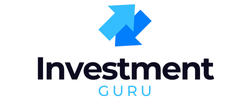If you’re a homeowner in 2025 and need extra cash, two of the most common ways to use your home’s equity are a cash out refinance or a home equity line of credit (HELOC). Both can put money in your pocket, but they work very differently. With a cash out refinance, you replace your current mortgage with a bigger one and get the difference in cash. A HELOC, on the other hand, works like a credit card tied to your house—you borrow what you need, when you need it, up to a set limit.
Each option has its benefits. A cash out refinance can give you one big lump sum and lock in a fixed interest rate, but it also means starting over with a new mortgage. A HELOC gives you more flexibility and usually lower upfront costs, but the interest rate can change over time, which makes your payments less predictable.
In this article, we’ll break down the pros and cons of both choices in plain language. You’ll learn when a cash out refinance makes sense, when a HELOC is the better fit, and how today’s rates and housing trends play into the decision.
By the end, you’ll know which option is more practical for your situation—whether you want predictable payments, borrowing flexibility, or the lowest overall cost.
Table of Contents
Why 2025 Is a Crucial Year for Home Equity Loans
Interest rates in 2025 remain relatively high compared to pre-2020 averages, although major lenders predict gradual stabilization. According to Freddie Mac mortgage rate research, fixed rates are expected to hover in the 6%–7% range. HELOCs, which typically tie to the prime rate, remain variable but often start lower than a 30-year refinance rate. That volatility makes timing even more critical.
Homeowners often consider tapping home equity to:
- Fund renovations or home additions
- Consolidate high-interest debt
- Pay for education, medical bills, or large expenses
- Leverage favorable market conditions
Cash Out Refinance Explained
A cash out refinance replaces your current mortgage with a new, larger loan. The difference goes to you in cash. For example, if you owe $200,000 on your home but it’s worth $400,000, a lender might allow you to refinance into a $300,000 loan, pay off the old balance, and hand you $100,000.
Pros of Cash Out Refinance
- Fixed interest rate stability
- Potentially lower long-term rate compared to HELOC
- Single payment instead of juggling a mortgage + line of credit
Cons of Cash Out Refinance
- Higher closing costs (2–5% of the loan amount)
- You restart the mortgage “clock” with a new 15- or 30-year term
- Rates may be higher than your current mortgage—meaning you pay more

Home Equity Line of Credit (HELOC) Explained
A HELOC is more like a credit card tied to your home equity. Instead of replacing your mortgage, it gives you a credit line to borrow as needed. The draw period usually lasts 5–10 years, after which you enter repayment.
Pros of a HELOC
- Flexible—you only pay interest on what you use
- Lower upfront costs than refinancing
- Can be ideal for projects with staggered payments (like renovations)
Cons of a HELOC
- Variable interest rates—your payment may rise
- Separate payment from your mortgage
- Some lenders impose annual fees
Cash Out Refinance vs HELOC 2025: Key Differences

| Feature | Cash Out Refinance | HELOC |
|---|---|---|
| Structure | New mortgage replaces your old one | Additional credit line alongside mortgage |
| Interest Rates | Fixed, usually higher closing costs | Variable, often lower initial rate |
| Loan Terms | 15–30 years | 5–10 years draw, 10–20 years repayment |
| Payments | Single mortgage payment | Mortgage + HELOC payment |
| Best For | Large single expenses like debt payoff | Flexible access for ongoing projects |
Costs to Watch in 2025
Both options involve costs beyond interest rates:
- Cash Out Refinance Closing Costs: Around 2–5% of your loan balance. On a $350,000 loan, that’s $7,000–$17,500 upfront.
- HELOC Setup Fees: Many lenders advertise no closing costs, but you may face appraisal fees and annual service charges of $50–$100.
- Prepayment Penalties: Some loans penalize early payoff—read the fine print.
How to Choose: Questions to Ask Yourself
- Am I funding a one-time expense or ongoing project?
- Is stability more important than initial affordability?
- How long will I stay in this home?
- What’s my current mortgage rate vs today’s market?
2025 Step-by-Step: Applying for Each Option
How to Apply for a Cash Out Refinance
- Compare Lenders: Use online comparison sites or call top lenders directly.
- Check Your Credit: Higher credit scores unlock better refinance rates.
- Gather Documents: W-2s, tax returns, bank statements, and proof of assets.
- Apply: Submit applications online or via local bank branches.
- Appraisal: Your lender orders an appraisal to confirm home value.
- Closing: Pay closing costs, sign paperwork, and receive cash within days.
How to Apply for a HELOC
- Research Rates: Compare HELOC offers at banks, credit unions, and online lenders in your state.
- Apply: Requirements include minimum 620 credit score and at least 15–20% equity in your home.
- Approval: Appraisal determines your credit line size.
- Draw Cash: Access funds through checks, debit cards, or online transfers.
- Repay: Make interest-only payments during draw period, then principal + interest afterward.
Tax Considerations in 2025
The IRS allows mortgage interest deductions under certain rules. According to the IRS Topic No. 505, interest from both cash out refinances and HELOCs is tax deductible if used to “buy, build, or substantially improve” your home. However, using it for debt consolidation or personal expenses usually does not qualify.
Scenario Examples
Case 1: Debt Consolidation
If you carry $40,000 in credit card debt at 20% interest, a cash out refinance rolling that into a 6.5% mortgage can save thousands annually. A HELOC could also work, but variable rates create risk long-term.
Case 2: Renovating a Kitchen in Stages
A HELOC provides flexibility to borrow $20,000 at a time for each stage of construction, avoiding paying interest upfront on funds you don’t need immediately.
FAQs About Cash Out Refinance vs HELOC 2025
- Which has lower rates in 2025—HELOC or cash out refinance?
HELOCs often start with slightly lower rates, but they’re variable. Cash out refinances are fixed and more predictable. - Can I get both a HELOC and a cash out refinance?
Technically yes, but lenders typically allow one major equity product at a time due to risk exposure. - Are HELOCs still tax deductible in 2025?
Only if funds are used for qualified home improvements, per IRS rules. - How much equity do I need?
Most lenders require at least 15–20% equity in your home to qualify. - Will applying hurt my credit?
Yes, both require hard inquiries that may temporarily reduce your credit score by 5–10 points. - How fast can I get cash?
HELOCs may fund in 2–4 weeks. Cash out refinances often take 30–60 days due to closing requirements. - Is a HELOC better for short-term borrowing?
Yes, especially if you plan to pay it down quickly within the draw period. - Can I refinance my HELOC into a fixed loan?
Yes, many lenders allow conversion to fixed-rate installments during repayment. - What happens if home values fall?
You risk owing more than your home is worth if the market drops significantly. - Which option is easiest to qualify for in 2025?
HELOCs usually have lighter requirements and lower fees, making them easier for first-timers.
Conclusion: The Smarter Choice in 2025
In the debate of cash out refinance vs HELOC in 2025, the right answer depends on your financial goals. Choose a cash out refinance if you want a lump sum at a fixed rate—perfect for debt consolidation or large investments. Opt for a HELOC if you value flexibility and will borrow in smaller amounts over time, often for renovations. Both options demand careful comparison of rates and fees.
Before making a move, shop at least three lenders, compare APR—not just initial rates—and calculate your break-even point on fees. Your home is your largest asset. Handle it with strategy. Start your comparison today and put your equity to work wisely in 2025.


